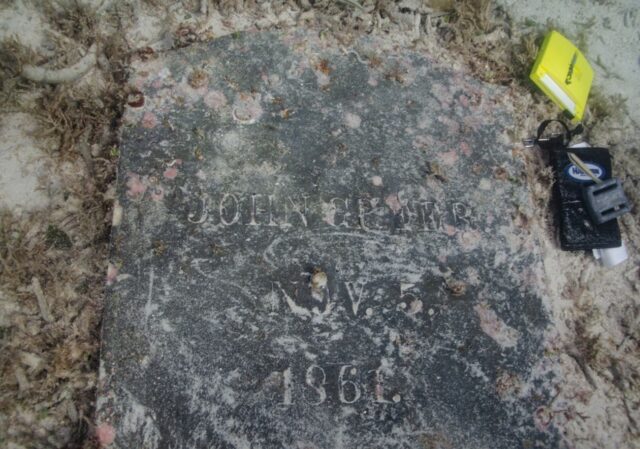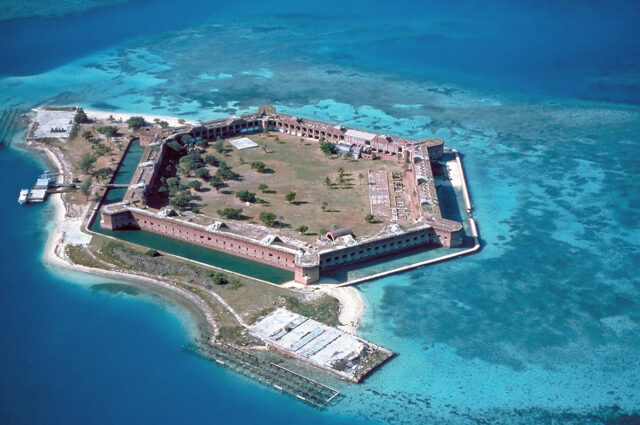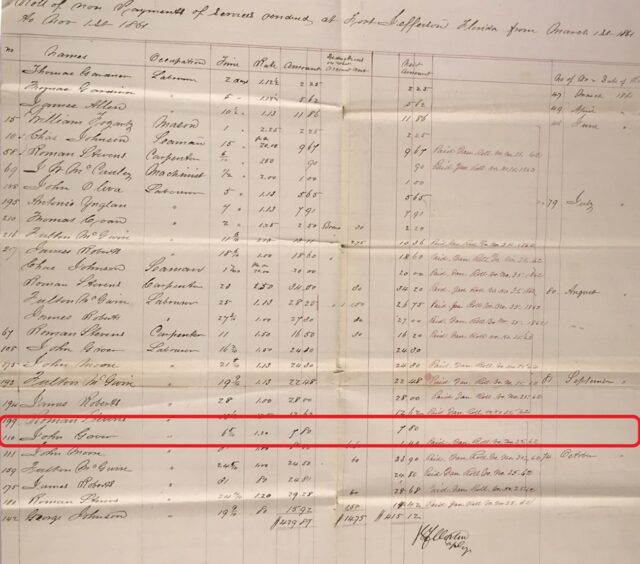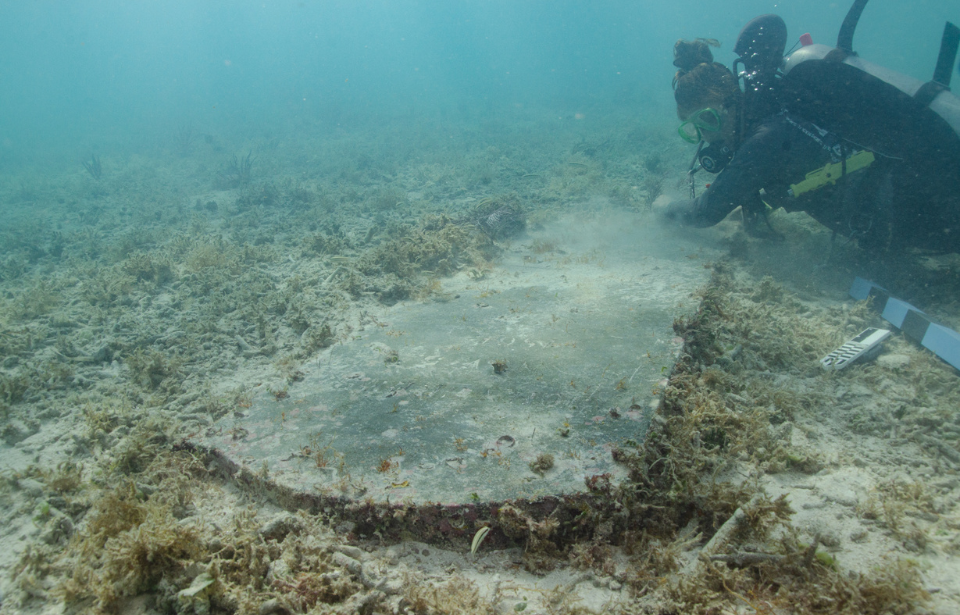Archaeologists exploring the depths of Dry Tortugas National Park have discovered what they believe to be the site of a former hospital and cemetery, near the once-operational Fort Jefferson. All they have to show that the site exists is a single gravestone, but it’s believed dozens of remains could be buried beneath the seafloor.

In a news release, the National Park Service shared that the gravestone’s discovery follows months of work by archaeologists, the agency’s Submerged Resources Center, graduate students from the University of Miami and the Southeast Archaeologist Center.
A survey began in August 2022, after the site was accidentally found by an overhead flight. The gravestone, made of greywacke, belonged to John Greer, a laborer who died on November 5, 1861. While his cause of death is unknown, it’s believed he perished after contracting a mosquito-borne illness, such as yellow fever.

It’s theorized Greer worked at Fort Jefferson. During the American Civil War, the installation was used as a military prison and was home to servicemen, enslaved persons and civilian laborers. It was surrounded by several smaller islands that served a number of purposes: a lighthouse station, safe harbors, military training sites, a naval hospital, a quarantine facility and naval coaling outposts.
The fort itself was located on Garden Key in the lower Florida Keys, and was operational until 1873. Given the region’s humidity, it was common for those residing and working at the base to contract illnesses passed by mosquitos, meaning the quarantine facility was used heavily.
Over time, climate change and harsh weather conditions led the island to sink beneath the water’s surface, meaning the remains of those who perished from disease did, as well. This would explain the gravestone’s discovery and the assumption that bodies dating back to the 19th century could eventually be uncovered at the site.
Check out this cool find! National Park archeologists found the remains of a hospital and cemetery underwater at Dry Tortugas National Park.
NPS Photos C. Sproul
Images courtesy of National Park Service pic.twitter.com/GjVxpmfv6V
— Dry Tortugas National Park (@DryTortugasNPS) May 1, 2023
“This intriguing find highlights the potential for untold stories in Dry Tortugas National Park, both above and below the water,” Josh Marano, the project director for the recent survey, said in the press release. “Although much of the history of Fort Jefferson focuses on the fortification itself and some of its infamous prisoners, we are actively working to tell the stories of the enslaved people, women, children and civilian laborers.”
The National Park Service added, “Efforts to learn more about Mr. Greer and other individuals interred on the now submerged island are ongoing. The remains of the hospital as well as the surrounding cemetery have been documented as an archaeological resource and will be routinely monitored by members of the South Florida National Parks Cultural Resource Program.”

More from us: Researchers Discover First Human Representations of Ancient Tartessos People
Fort Jefferson and Dry Tortugas National Park have become popular tourist attractions, with snorkelers enjoying the waters that surround the area. According to those involved in the archaeological survey, historical records will continue to be examined, in order to learn more about the site and those possibly buried there.
